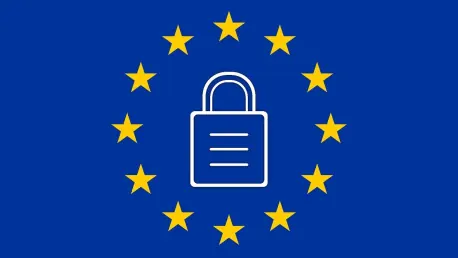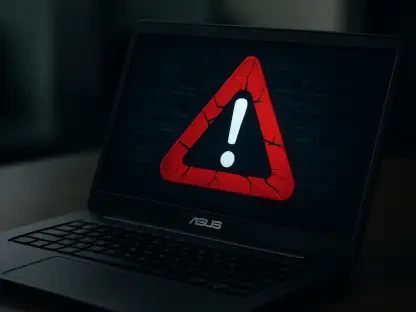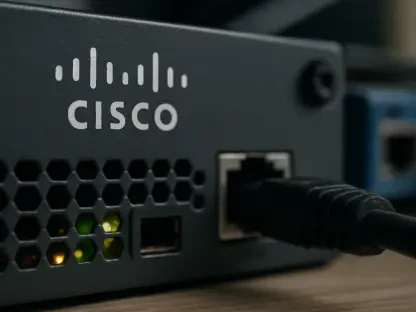The European Union Agency for Cybersecurity (ENISA) has recently unveiled a comprehensive set of technical guidelines aimed at assisting EU Member States and relevant entities in implementing the cybersecurity risk-management measures mandated by the NIS2 Directive. This initiative follows the European Commission’s adoption of initial implementing rules that outline cybersecurity requirements for critical entities and networks. ENISA’s announcement highlights the significance of these guidelines in achieving a unified and robust level of cybersecurity across the Union, particularly in light of escalating cyber threats targeting critical sectors.
The NIS2 Directive: A New Era in EU Cybersecurity
The NIS2 Directive represents a pivotal piece of EU-wide cybersecurity legislation, requiring member states to integrate its measures into national laws by October 17, 2024. By aiming to enhance the resilience of the EU’s critical sectors against cyber risks, this directive marks a significant leap forward in the region’s approach to cybersecurity. ENISA, in collaboration with the NIS Cooperation Group’s (NIS CG) work streams and other expert groups such as ECATS and ECASEC, developed these technical guidelines after extensive consultations carried out from June 2024 to mid-October 2024. The collaborative nature of this development underscores the commitment to creating a robust and inclusive framework.
Non-Binding Yet Actionable Guidance
A key feature of the guidance is its non-binding nature, offering practical advice on the technical and methodological requirements stipulated by the NIS2 Directive without imposing penalties for non-compliance. This valuable guidance serves not only entities directly regulated by the NIS2 Directive but also other public and private actors seeking to enhance their cybersecurity posture. Each requirement within the guidance is detailed with three main components: general guidance, examples of evidence demonstrating compliance, and additional tips for effective implementation. These components ensure that entities have a clear understanding of what is expected and how to practically apply these insights to improve their cybersecurity defenses.
Mapping to Recognized Standards
Facilitating Interoperability and Compliance
To support interoperability and streamline compliance, the technical guidance includes a comprehensive mapping table correlating the directive’s requirements with recognized European and international standards such as ISO/IEC 27001:2022, ISO/IEC 27002:20224, NIST Cybersecurity Framework 2.0, ETSI EN 319 401 V2.2.1, and CEN/TS 18026:2024. This mapping provides entities a framework to integrate multiple standards, reduce redundancy, and ease the auditing process. However, it is important to note that this mapping does not imply direct equivalence among different standards but rather highlights parallel requirements that could facilitate compliance. This approach enables organizations to align their compliance efforts with broader international practices, thus enhancing their overall cybersecurity approach.
Enhancing Cybersecurity Posture
ENISA’s guidance covers several critical aspects of cybersecurity risk management, ensuring that relevant entities establish and maintain comprehensive frameworks to identify and mitigate network and information security risks. Entities are required to conduct regular risk assessments, document outcomes, and develop treatment plans approved by senior management or accountable individuals. These assessments and plans are fundamental to maintaining a robust defense against cyber threats. By making sure that each stage of the risk management process is well-documented and carefully implemented, entities can respond more effectively to emerging cyber threats and reduce their potential impacts.
Incident Handling and Response
Developing Incident Handling Policies
The guidance mandates an incident handling policy detailing procedures for detecting, analyzing, containing, recovering from, and reporting incidents in a timely manner. Entities are advised to monitor and log network activities to identify potential incidents and respond effectively to mitigate impacts. Additionally, a mechanism should be established to allow employees, suppliers, and customers to report suspicious activities, thereby fostering a proactive security culture. By involving various stakeholders in the incident reporting process, entities can create a more inclusive and resilient cybersecurity environment where threats are swiftly identified and managed.
Ensuring Business Continuity and Disaster Recovery
Business continuity and disaster recovery plans form another cornerstone of the ENISA guidance. Relevant entities are urged to maintain backup copies of data and ensure sufficient resources are available to uphold an appropriate level of redundancy during incidents. Crisis management processes should also be established to manage high-impact events efficiently. By preparing for potential disruptions and ensuring that critical data is continuously protected, entities can maintain operational stability even in the face of significant cyber threats. This preparedness not only reinforces resilience but also builds confidence among stakeholders in the entity’s ability to handle crises effectively.
Supply Chain Security
Implementing Robust Supply Chain Policies
In addressing supply chain security, ENISA’s document indicates that entities should implement robust policies governing relations with direct suppliers and service providers. Identifying and mitigating security risks within supply chains is integral to the overall security framework. Entities must clearly communicate their role and expectations to their suppliers and service providers, ensuring a cohesive approach to security. By establishing clear guidelines and expectations, entities can foster stronger security practices within their supply chains, thereby reducing vulnerabilities that may arise from their external partnerships.
Enhancing Human Resources Security
Human resources security is another critical area addressed by the guidance. ENISA stipulates that employees and direct suppliers must understand and adhere to their security responsibilities as per the organization’s network and information security policies. This includes regular training and clear communication of security roles and expectations. Ensuring that all personnel are aware of their responsibilities and equipped with the necessary knowledge to fulfill them effectively enhances the organization’s overall cybersecurity posture. By prioritizing ongoing training and communication, entities can build a culture of security awareness that permeates throughout the organization and beyond.
Access Control and Asset Management
Establishing Access Control Policies
Access control policies are essential for protecting network and information systems. The guidance calls for the establishment, documentation, and periodic review of logical and physical access controls based on business and security requirements. Entities must implement secure authentication procedures and technologies that reflect these access controls. By regularly reviewing and updating access control measures, entities can ensure that their security policies remain aligned with current threats and technological advancements, thereby providing robust protection for their critical systems and data.
Effective Asset Management
ENISA’s guidance also emphasizes the importance of asset management. Entities are required to classify all assets within the scope of their networks and information systems according to the level of protection required. Regular reviews and updates of asset classifications ensure they remain current and accurate. An up-to-date inventory of all assets, with documented changes and history, is crucial for effective asset management. By maintaining a detailed record of assets and their classifications, entities can manage their resources more efficiently and ensure that appropriate security measures are applied to protect their most valuable assets.
Industry Consultation and Feedback
Open Consultation Period
The European Union Agency for Cybersecurity (ENISA) recently introduced a detailed set of technical guidelines to help EU Member States and relevant entities comply with the cybersecurity risk-management measures required by the NIS2 Directive. This move comes on the heels of the European Commission’s adoption of initial implementing rules that establish cybersecurity standards for critical entities and networks. ENISA’s new guidelines are pivotal for achieving a consistent and robust level of cybersecurity throughout the Union.
These efforts are particularly crucial as cyber threats continue to escalate, especially against critical sectors such as healthcare, energy, and transportation. With the increasing frequency and sophistication of cyberattacks, the need for a coordinated and comprehensive approach to cybersecurity has never been more urgent. ENISA’s guidelines serve as an essential blueprint for improving the overall security posture of EU countries, ensuring that they can effectively defend against cyber threats and vulnerabilities.
By promoting uniform cybersecurity practices, the EU aims to enhance the resilience of its critical infrastructure and safeguard vital services that citizens rely on daily. This initiative underscores the EU’s commitment to strengthening its cybersecurity framework, facilitating better cooperation among Member States, and protecting the digital environment against ever-evolving threats. ENISA’s guidelines represent a significant step forward in building a safer and more secure Europe.









